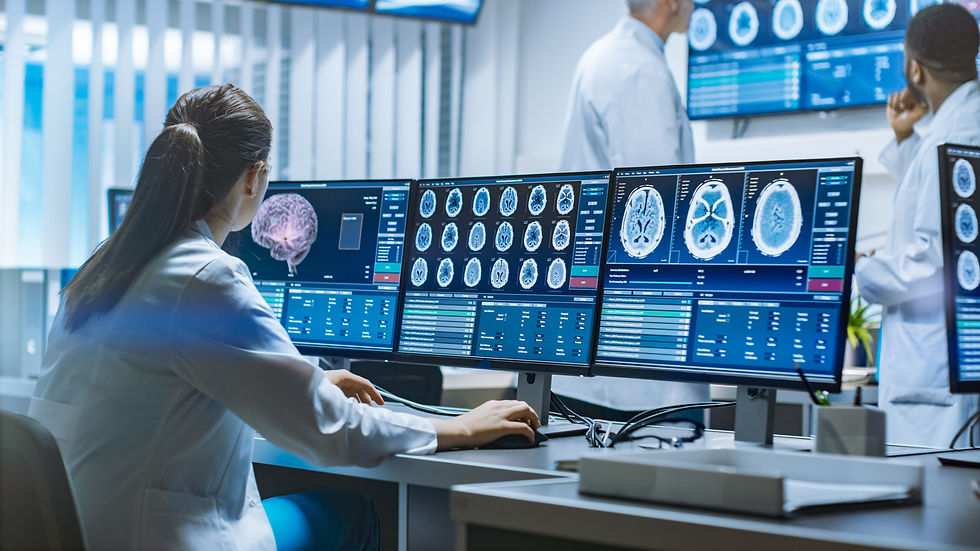The Science Behind DMT (Dance Movement Therapy) : Why It Works
- VIDHYA SHENOY
- May 4
- 4 min read
By Vidhya Shenoy, Counselling Psychologist & Certified Dance and Movement Therapist | Mumbai
Have you ever noticed how your body “knows” something before your mind does? The tightness in your chest before a difficult conversation. The restlessness when you're overwhelmed or the lightness after a good cry or a walk.
These aren't coincidences—they’re signals from your body. And they’re the foundation of Dance Movement Therapy (DMT), a powerful approach to healing that integrates the body and mind.
In this post, we’ll explore the science behind DMT, how it helps us process emotions, and why it works, especially for those of us living in high-pressure urban environments like Mumbai.

What Is Dance Movement Therapy?
Dance Movement Therapy (DMT) is a psychotherapeutic use of movement to support mental, emotional, and physical well-being. It’s not about dance as performance, it’s about using movement as a form of expression and communication, especially when words fall short.
As a certified DMT practitioner, I often say: “You don’t need to be a dancer to benefit from DMT. You just need a body willing to listen and express.”
The Mind-Body Connection: Why Movement Matters
Modern neuroscience confirms what many ancient traditions have always known that our bodies and minds are deeply interconnected. Emotions aren't just processed in the brain, they’re experienced throughout the body.
Stress, for example, increases cortisol levels and tightens muscles. Unprocessed grief can feel like heaviness in the chest. When we move consciously, we activate multiple areas of the brain—including those responsible for memory, emotion regulation, and sensory integration.
In short: movement isn’t just physical, it’s neurological and emotional.

How Dance Movement Therapy Heals
Here’s what makes DMT so effective:
1. It Activates the Brain’s Emotional Centers
DMT stimulates the limbic system, which governs emotion and memory. Movement helps access emotions stored in the body, especially those that are unconscious or preverbal.
2. It Offers Non-Verbal Expression
Not all emotions are easy to talk about. Trauma, shame, or early childhood experiences often live beyond language. DMT gives people a safe, embodied way to explore and express these feelings without needing the “right words.”
3. It Builds Self-Awareness & Emotional Regulation
When you move mindfully, you become more aware of how your body responds to stress, sadness, joy, or fear. Over time, this embodied awareness helps you recognize emotional patterns and develop healthier coping strategies.
Is There Scientific Evidence?
Yes and it's growing. Research from fields like neuroscience, somatic psychology, and trauma studies supports the effectiveness of DMT.
A 2019 meta-analysis found that DMT significantly reduces symptoms of depression and anxiety.

Studies show improvements in body image, self-esteem, and even motor coordination in neurodivergent individuals.
Trauma-informed DMT has shown benefits for survivors of abuse, PTSD, and chronic stress.
What Happens in a DMT Session?
Sessions typically include:
Warm-up: Gentle movements to connect with the body
Exploration: Expressive, improvised movement tailored to your emotions
Reflection: Verbal or creative processing of what emerged
Each session is client-centered. You’re not expected to “perform” just to be present.
Why DMT Is Especially Relevant in India
In cultures like ours, where mental health is often stigmatized and emotional expression may be discouraged, movement offers a culturally sensitive bridge. It helps clients process without having to over-explain.
And in a city like Mumbai which is fast-paced, overstimulated, emotionally taxing, DMT offers a moment of embodied stillness and self-connection.
Final Thoughts: You Don’t Have to Choose Between Talking and Moving
Dance Movement Therapy is not a replacement for talk therapy, it’s a complement. It allows healing to happen through the body, not just through words.
If your emotions feel stuck, or words feel limited, your body might already know what needs to be said.
Ready to explore your inner world through movement?
I invite you to connect with me for a discovery session or try this simple practice:

Movement Prompt: Put on a piece of music that reflects your current mood. Allow your body to move freely, without judgment. Notice what emotions arise. What might your body be trying to say?
Want to know more? Reach out for sessions, workshops, or just a conversation.
Based in Mumbai | Book a Call | Request Full Brochure
References & Further Readings
American Dance Therapy Association. (n.d.). What is Dance/Movement Therapy? https://www.adta.org
Koch, S. C., Kunz, T., Lykou, S., & Cruz, R. (2014). Effects of dance movement therapy and dance on health-related psychological outcomes: A meta-analysis. The Arts in Psychotherapy, 41(1), 46–64.
van der Kolk, B. (2014). The Body Keeps the Score: Brain, Mind, and Body in the Healing of Trauma. Penguin Books.
Payne, H. (2006). Dance Movement Therapy: Theory, Research and Practice (2nd ed.). Routledge.
Pylvänäinen, P. M., Muotka, J. S., & Lappalainen, R. (2015). A dance movement therapy group for depressed adult patients in a psychiatric outpatient clinic: Effects of the treatment. Frontiers in Psychology, 6, 980.
Ratey, J. J. (2008). Spark: The Revolutionary New Science of Exercise and the Brain. Little, Brown Spark.




Comments